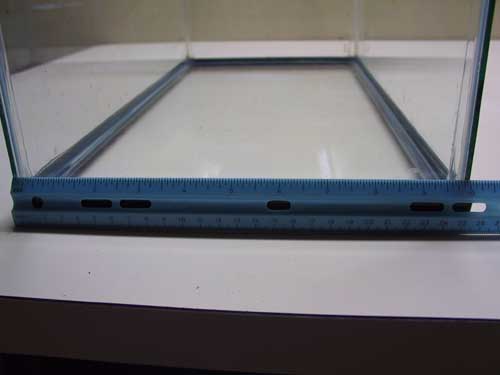
I like to design tanks with horizontal glass plates. The advantage of this kind of tank is that you can have a real soil-based terrarium area without reducing the aquatic area. This kind of setup is ideal for newts that like to spend the summer on land, but are fully aquatic during their breeding season.
Note: This project involves sharp and breakable items. These instructions are intended for adults. Readers are responsible for their own safety and should use appropriate protective gear. I take no responsibility for lost fingers!
Note to international readers: All measurements are given in inches. Sorry, but U.S. aquariums and glass shops are based on inches.
 |
Measure the width of the tank. Here, the outside width is exactly 10". Therefore, the inside width is 9¾" (subtracting the 1/8" thickness of the two sides). The glass plate was ordered with a width of 9½" to allow for a bit of space. (See below for the exact dimensions of the glass pieces that were ordered.) Next, decide how far the glass plate should go across the tank. Remember that the area under the glass will not receive any light, and you will have to reach under the shelf to clean. The length of the glass should be less than half the length of the tank. |
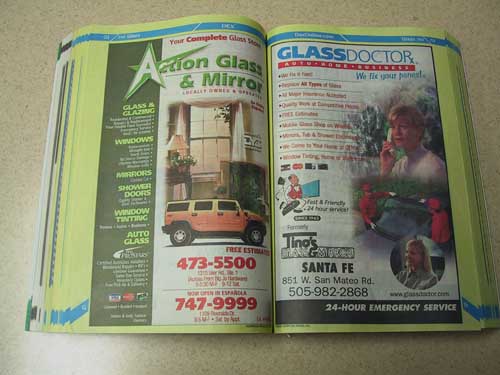 |
Hit the Yellow Pages. My favorite shop charges $2.75 for any size of custom-cut glass up to 12 x 12". If they charge a lot more than this, keep calling other places. Be sure to ask them to smooth the edges! If you want to use glass rods, these can be bought at scientific supply places and art supply places (for glassblowing). |
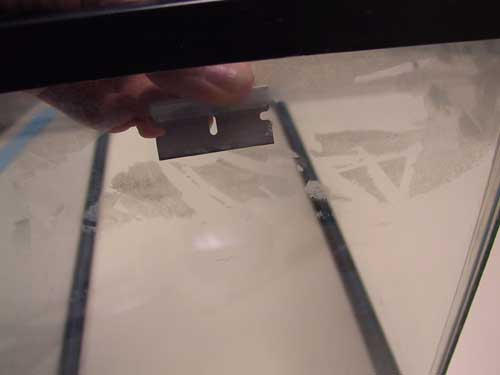 |
If you are using an old tank, scrub it thoroughly. Use a blade to remove any calcium build-up in the area where you are going to glue. |
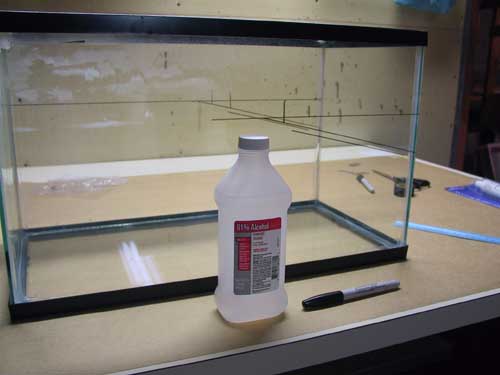 |
Mark the tank. First mark where you want the water level to be, then figure out where you need to glue the glass to achieve that water level. Feel free to play around at this stage. You can remove marker with rubbing alcohol as many times as you like, but once the glass is cemented in place, it's very hard to change your mind! Note:
|
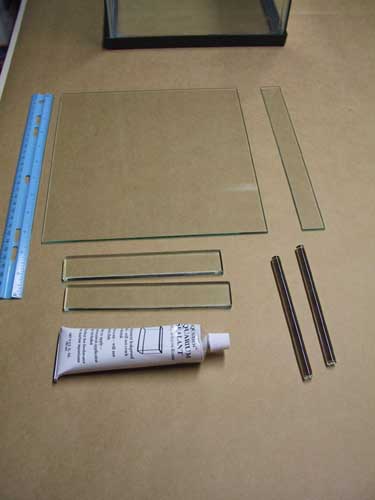 |
The pieces you need:
Note: In retrospect, I wish that the glass pieces had been just a bit wider. I think that 9 5/8" would have been better than 9½". However, this size did work OK. |
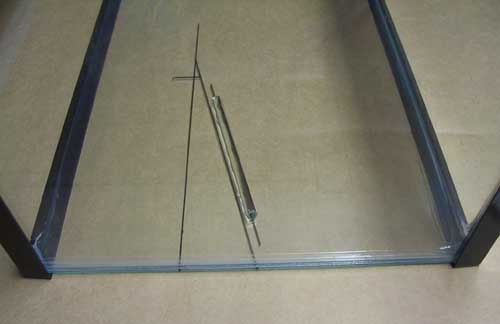 |
Wipe down all surfaces to be glued with rubbing alcohol to remove any residue. Lay the tank on its side, and glue one glass rod (or 1 x 6" piece) into place. (If 1 x 6" pieces are used, glue them flat against the glass, not on edge.) Let the glue set for at least 1 hour. Turn the tank over, and glue the second rod in place. Allow to cure for at least 24 hours before cementing the large glass plate. Note: When gluing the second support piece, hold the large glass plate in place momentarily, just to make sure that the placement matches the other side perfectly. |
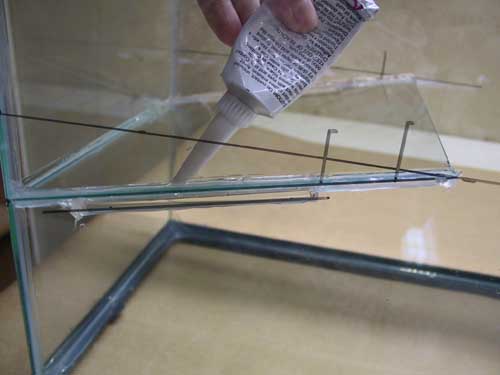 |
Put the large glass plate in place and apply silcone cement above and below it. If the glass rods have sharp ends, cover well with silicone. |
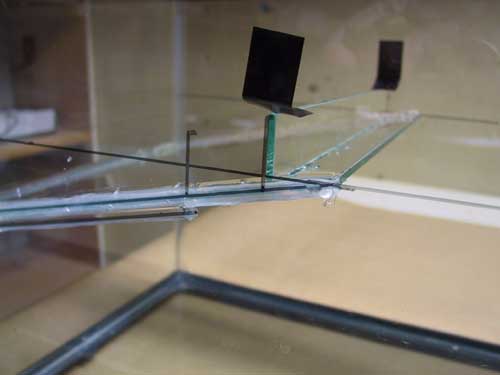 |
Put the vertical 1" piece in place. Apply a bit of silicone under it, and hold it in place with tape. |
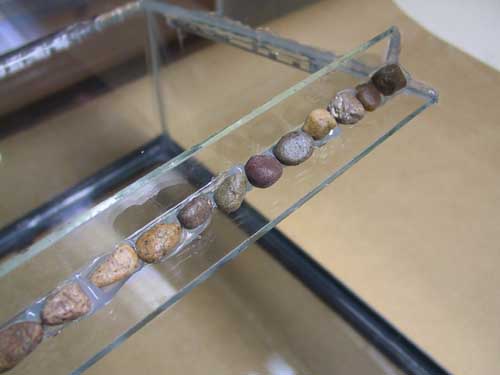 |
One hour later, remove the tape and apply silicone all the way around. If desired, stick small rocks onto the "shelf" area. |
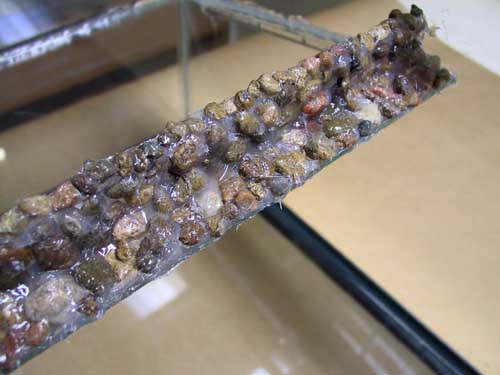 |
I added more rocks to the shelf area to cover the exposed edges of the glass. |
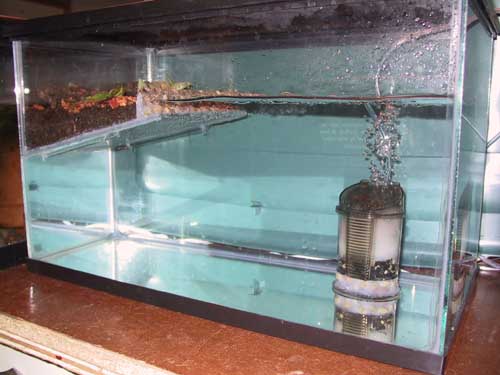 |
Allow the whole thing to cure for 3 days, or until all traces of vinegar smell are gone. Add soil. I use a mixture of coconut fiber and top soil. To minimize the muck that the newts will track into the water, I top this with a layer of bark chips or cypress mulch. Add plant cuttings and water! |
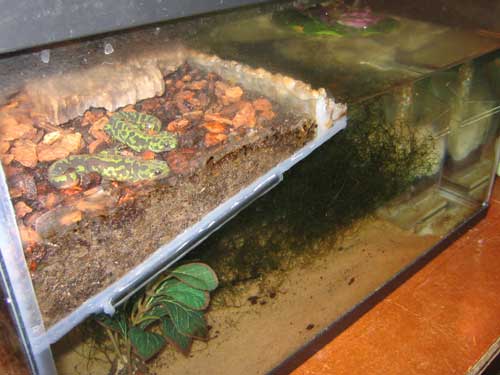 |
Here is the same tank several months later. |
Other examples of divided tanks can be seen: Here.
©2004 Jennifer Macke